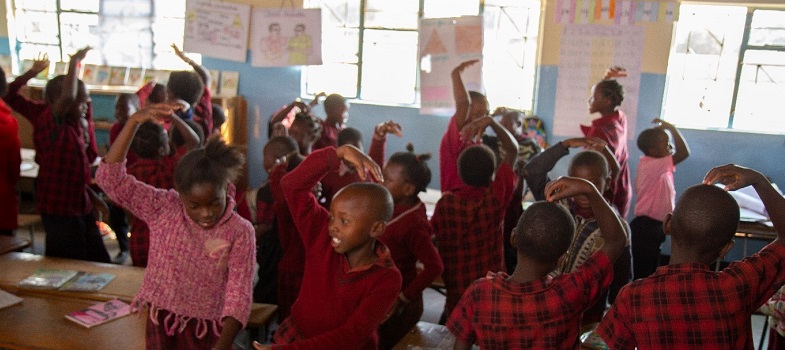Training guide
2. Being inclusive
2.1. TOP TIPS for being inclusive
If you have children with special needs in your class, but no specialist equipment – such as braille resources, special chairs or hearing aids – it is tempting to think that there is nothing you can do to help that child. That is not the case.
All teachers can:
- get to know students as individuals
- represent ideas and concepts in different ways using written, visual or audio resources
- organise well-structured, purposeful pair and group work
- regularly revise key knowledge and concepts
- display key words and pictures related to topics on the wall
- create a welcoming atmosphere which promotes participation and praises effort
- model good manners
- use concrete objects and experiences whenever possible, relating subject content to the experiences of students’ lives
- move students to the most appropriate part of the classroom (so they can maximise use of hearing/vision and are minimally distracted by others).
This will benefit all the children in the class.
You might notice that despite good quality teaching, some students are still not achieving as well as you would like because they have specific needs or challenges. At this stage teachers can help each other by:
- providing simple, locally made teaching aids if necessary (e.g. a writing frame/enlarged print)
- working closely with parents and other teachers
- pairing students with a peer supporter
- switching the time of a lesson (for example move agriculture to the first lesson so that a pupil with albinism is less affected by the sun).
After implementing this additional support, you may feel that the student is still not achieving as expected. Speak to the headteacher about the possibility of accessing support and advice from more specialist sources. It may be possible to:
- arrange for assessment by a specialist
- liaise with the appropriate authorities for the provision of specialist resources (e.g. braille material/mobility equipment)
- make links with special schools to share expertise
- make links with other schools or teachers who might have students with similar needs.
The first list includes things that everyone can do in their lessons to help all children feel included. The second list is things you can do together with others and the third list is things that are outside your control. While you are waiting for a proper assessment or special equipment, you can support all children by paying attention to the first and second lists.
